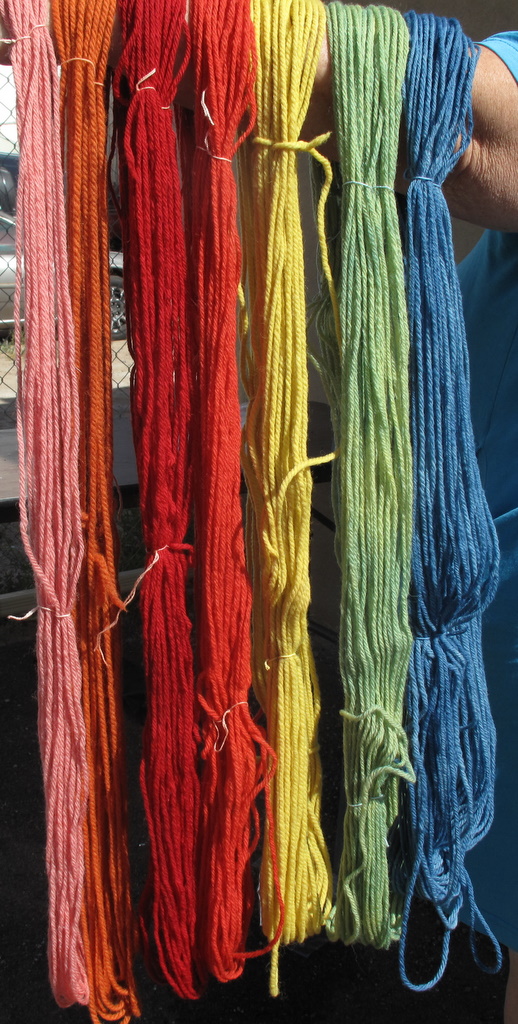The Best and the Brightest (Natural Dyes, That Is)

From left, exhaust cochineal, madder, first bath cochineal, osage orange, indigo over osage orange and indigo.
Mesa, AZ It’s April and the thermometer in the Valley of the Sun is in the 90 degree range. It’s indigo weather! Add some cochineal bugs, munjeet (a type of madder) and osage orange sawdust and you’ve got a rainbow in the making. Cochineal and indigo color some of the yarns used by Navajo weavers in the 19th century and some of fine artists among Navajo weavers, like D.Y. Begay, Roy Kady and Morris Muskett continue to work with them as well as some of the other dyes that I taught students how to use yesterday and last Saturday at the Fiber Factory in Mesa, AZ.
Working with these dyes helps you to develop a profound appreciation for both history and chemistry. The sources of these colors span the globe and they are integral players in the flow of events from the earliest times. There are textiles found in Egypt dyed with madder, the Aztecs exacted tribute in cochineal and the Scots dyed their faces blue for battle with woad, an indigo bearing plant. These are colors of the finest of the Chief Blankets, the Late Classic Blankets, the British red coats and Bayeux Tapestry. By manipulating the properties of their vats and baths, dye masters developed proprietary formulas and methods that were guarded every bit as closely as the design of the next iPhone. It’s a real privilege to be able to teach their use and legacy to others. I have to go rinse some yarn…..
Hagoshíí (so long for now)
Mary Walker

Thanks, Sandy! We really hit the mother lode on that cochineal yesterday. Have dye pots, will travel….
Beautiful!